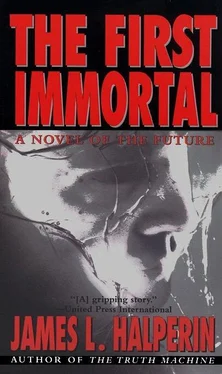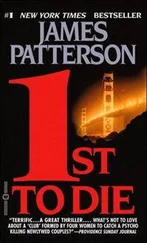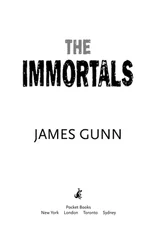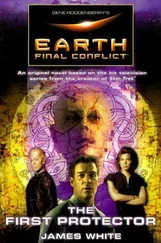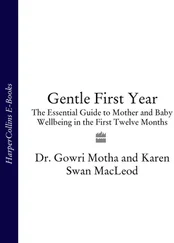“A great dream,” Gary agreed.
“Of course, nothing ever turns out quite as one imagines it.” Toby bought another round by flashing his smartcard on the scanner in front of him, then turned to Gary and spoke with obvious care: “Once, way back in 1941, I told your father I expected to be dead within forty years.” He chuckled. “As you can see, I was grievously mistaken.”
Gary considered not only his friend’s words but also the manner in which they were delivered. Toby had reached some kind of decision. “Good thing, eh?”
The older man hesitated. “The timing does seem optimal.” Toby displayed a chilling serenity that Gary had twice before witnessed in loved ones.
“Timing? For what?” He already knew the answer.
Toby pulled a black-trimmed, 1.4-ounce matchbox-sized digital communicator from his shirt pocket, pushed a few buttons, and handed it to Gary, who stared at the screen.
Gary fought a desire to crush the little thing in his fist. “A two-year-old suicide permit? What the hell’s going on, Toby? You can’t be serious about this.”
“Not only am I serious, but I’m acting upon the same logic I learned from you and your father.”
“Are you dying?”
“Genetic Scorecard says I probably have ten comfortable years left; maybe twelve. And that’s based on therapies available when I had myself tested, almost three years ago. So you can probably even add another year. But unless I’ve completely misjudged you, when I tell you the circumstances, you’ll realize I have no choice.”
Gary downed the rest of his tonic and grabbed their refills from the conveyor track. He handed Toby his, and waited for the explanation.
Both men were well aware of the “Prometheus Protocol.” Prometheus Incorporated was a private partnership, founded in 1999 after having raised $10 million during the previous two years from a group of 134 cryonicists. The pledges, intended to fund research and development, were collected from these “investors” in ten percent increments over a ten-year period. Some of the more skeptical participants even chose to donate their pledges to their favorite cryonics organizations (to realize charitable tax deductions), rather than holding the stock themselves, a decision most of them would first come to exult and then rue.
In spite of its for-profit status, the majority of Prometheus investors did so in pursuit of self-preservation rather than financial return. After all, there had been no proof that the freezing techniques in use at the time properly preserved any of the brain’s nongenetic information. A proven protocol would increase each investor’s own odds of identity preservation upon reanimation. Also, once such evidence existed, they’d reasoned, the public would flock to cryonics, creating both economies-of-scale and political clout, rendering biostasis cheaper and safer.
Prometheus’s goal had been to test and prove the viability of long-term brain preservation using “vitrification.” This technique replaced the water from each organ with various homogeneous liquid mixtures. Then the tissue could be made to behave more like vitrified glass, amenable to cooling without disruptive crystallization.
In a scientific sense, Prometheus had succeeded quickly. By securing excellent scientists and state-of-the-art equipment, they’d developed an expedient brain vitrification protocol in 2001, and over the subsequent two years had proved its efficacy on many varieties of mammalian brains.
To the shareholders’ astonishment and dismay, however, the Protocol’s success had done little to increase the popularity of cryonics. Since there had yet to be a successful revival of an entire mammal from suspension, the public continued to view cryonics as dubious speculation at best, farce at worst.
During the year 2005, fewer than forty thousand persons had undergone suspension worldwide, and about a third of them had purchased the Protocol. At $1,700 per suspension, the company had been grossing under $25 million per year, barely enough to cover operating expenses and interest on its debt. Wobbling on the edge of insolvency, Prometheus had been forced to sell a sixty percent interest in its patents to Nobine et Cie, a French biotech outfit owned by Drs. Claude Noire and Edouard Binette.
Ten days ago, in the city of Aix-en-Provence, under fully observed conditions, Noire and Binette had revived a mouse they’d frozen two weeks earlier at minus 79 degrees Celsius. The scientists had used a slight modification of the Prometheus Protocol. While this rodent had been the only survivor out of 1,300 attempts, the feat was nonetheless a majestic achievement, immediately shifting the scientific paradigm of biostasis.
Most experts now predicted at least 500,000 human suspensions per year by decade’s end.
“I’ve known for thirty-one months,” Toby explained, “that I have the R17ALZ gene.”
“Late-onset, moderated Alzheimer’s?” Gary offered.
“Wow. You still keep up with all this stuff?”
“Some of it. But you don’t have any symptoms, do you?”
“Not that I can tell, Gary, but then at what point would the loss of memory become apparent to me? The first time I forget to flush the toilet or the first time I forget my last name? I mean, nobody’s sure the tests measure everything. Hell, how would you even define ‘everything’ as a standardized test? That stuff’s unknowable. Besides, the timing really is ideal. No family, no obligations. And of course they just revived that mouse! So I have almost everything to gain by getting on with it, and everything to lose by waiting. Sure, I’m having a good time, but I’m eighty-two years old. Why give up my shot at hundreds, maybe thousands of years over the coming centuries, for a few extra years now? If I lose memory, I’ll lose identity, which is the same to me as losing my life. Every day I procrastinate is a gamble. A deadly gamble.”
Cryonics was only a gamble, Gary thought. Toby was alive now . Gary wanted to beg, to tell his friend: Screw reason, I need you. I love you. I want you here!
Instead he issued a long, audible exhalation, and then the simple, terrible truth: “Of course you’re right. And I’m sure gonna miss you.”
July 7, 2010
—The FDA issues strong advisories against human heart transplants after Dupont’s Jarvik 410 mechanical heart proves 114 percent safer in field trials. The 410 is the first to employ two backup self-winding power storage units, and three separate pumps, rendering simultaneous failure a near impossibility. Some doctors now recommend routine transplantation of the artificial organ to any patient above the age of 60, regardless of cardiovascular health.—The United States and Russian governments announce joint plans to build four manned space stations within the asteroid belt between Mars and Jupiter by the year 2020. President Travis Hall describes the project as “a golden opportunity to study a fascinating and potentially priceless natural resource that might play a crucial role in the future of humankind.”
“Time and weather, please,” Brandon Butters said.
“Five forty-seven A.M.,” a dulcet voice whispered from his wristband speaker. “Currently 76 degrees in Pittsfield, rising to 98 degrees at 1:47 P.M. in Boston. Fair to partly cloudy skies all day; no precipitation.”
Without putting on even his aeration sport coat, the fifty-seven-year-old District Attorney opened the security door by sliding his smartcard through the slot next to it and exited the Bayberry Hill Singles Residences. He walked the half mile on a decaying, neglected, stationary sidewalk uphill to the gleaming, newly built Mass Transit Authority station in Pittsfield, Massachusetts, and settled into an orthopedic recliner in the first-class section of the 6:25 A.M. Torpedo Train to Boston. He scrutinized fellow passengers for unfamiliar faces, but like many of Brandon’s similar safety-motivated practices, he performed this survey only from force of habit. It had been four years since the last assassination attempt on a prosecutor or judge anywhere in the United States. Indeed all violent crime had become rare. Swift and Sure had been too drastic for his tastes, more radical than it needed to be, but at least it seemed to be working, for now.
Читать дальше
